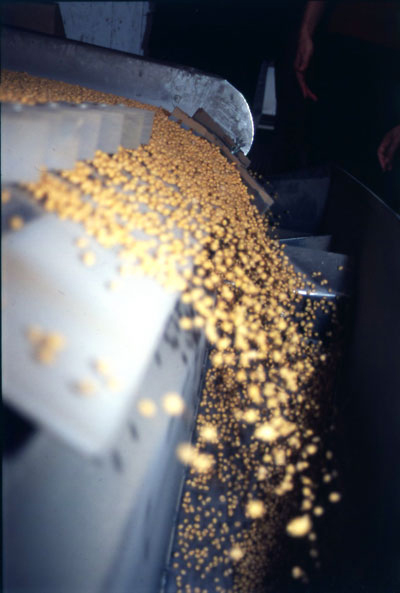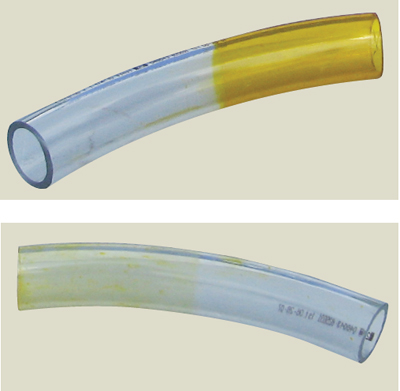
Features
Agronomy
Identity Preserved
First drought-tolerant corn technology developed
Drought is the leading cause of yield loss in many areas around the world. With changing climate conditions and predicted impacts on crop yields and global food supplies, the risk of more consistent drought conditions is expected to increase.
October 22, 2009 By Donna Fleury
Drought is the leading cause of yield loss in many areas around the world. With changing climate conditions and predicted impacts on crop yields and global food supplies, the risk of more consistent drought conditions is expected to increase. “Water availability is one of the key limiting factors when it comes to crop production around the world,” says Mark Lawson, Monsanto’s corn yield and stress platform lead. “It is estimated that two-thirds of yield losses farmers experience are due to drought.”
 |
|
In the US for example, about 80 percent of all corn fields in production experience drought stress sometime during the growing season. “In areas like the Western Great Plains where yields average 100 to 120 bushels per acre compared to a US average of 150 bu/ac, water is the key limiting factor for corn yield,” explains Lawson. “Drought is consistent in these areas and in seven out of 10 years farmers will see fairly significant drought impacts.”
Monsanto has developed multiple approaches to help farmers improve the performance of corn under dry conditions. The first generation product is the development of drought-tolerant corn. This transgenic corn technology includes a gene from the Bacillus subtilis bacteria, called cspB gene, which has been inserted into corn to improve yield stability under scarce water availability or drought conditions. “Normally under drought conditions the plants start shutting down their growth, reducing yield potential,” says Lawson. “This gene helps the plant to grow a little longer under drought conditions, producing a few more kernels per ear and improving yield stability.”
In extensive field trials across the US and other areas where corn crops have been put under significant stress, the drought-tolerant corn met or exceeded the six percent to 10 percent yield enhancement target. That is equivalent to an increase of about seven to 10 bu/ac in some of the key drought-prone areas in the US where average yields range from 70 to 130 bu/ac. There are no obvious visible or agronomic differences between this new corn hybrid variety and others, except the drought-tolerant trait extends the growth and yield opportunity of the crop under drought conditions. “We have advanced the trait into regulatory filings in the US, Canada and around the world,” explains Lawson. “Pending regulatory approvals, we have a target of 2012 to make drought-tolerant corn commercially available, first in the Western Great Plains, and then to other areas. Our plans are to provide the technology on our best agronomic platform, SmartStax, which has multiple modes of action against above- and below-ground insects, as well as herbicide tolerance, so growers can get the most value possible out of the drought technology.”

|
|
| In field trials across the US, the drought-tolerant corn met or exceeded the six to 10 percent yield enhancement goal. Photo courtesy of Monsanto. |
Monsanto has developed drought-tolerant corn as part of its yield and stress traits collaboration with BASF. The two companies are jointly contributing $1.5 billion during the life of the collaboration, which is aimed at developing higher-yielding crops and crops more tolerant to adverse environmental conditions such as drought.
Lawson explains that part of the strategy is the evaluation of these traits in corn first. If there are positive responses, then they will evaluate other markets for the potential of this drought-tolerant platform across all of their core crops. Monsanto is evaluating the gene and the potential fit in other parts of the world where drought commonly occurs, such as sub-Saharan Africa where drought is endemic and the resulting crop failures directly impact their ability to feed themselves. The latest Food and Agriculture Organization (FAO) estimates indicate that about a billion people have inadequate food available to them, partly due to drought. “A second approach to drought tolerance is the improvement of base genetics,” explains Lawson. “We are working harder than ever to select corn hybrids that have base genetics with improved performance in drought tolerance areas.”
The third pillar or approach is the development and adoption of reduced tillage systems and technologies in corn production to reduce the amount of water loss. “Monsanto is committed to improving the lives of farmers and the efficiency in their cropping systems,” says Lawson. “Drought tolerance and other traits in development are key to meeting our Sustainable Yield Commitment, which is to work towards doubling yield across our core crops and reducing inputs by one-third per unit of output produced. This first generation drought-tolerant corn technology and our other development approaches are major steps towards this goal.”